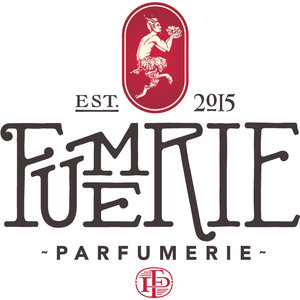An inevitable consequence of becoming a perfume fanatic is insatiable curiosity. The world of perfume is shrouded in mystery and each new bottle raises more questions. A vast expanse of unexplored terrain beckons...where do we begin?
When I first started down this road I struggled to find my bearings. Fine fragrance propels you headfirst into a realm of strange new scents. Of course, you'll enter into this world with a few olfactory touchstones but these reference points depend entirely upon your specific experiences. Growing up in the Inland Northwest I was familiar with the smells of the forest, a handful of basic spices, a smattering of common garden flowers and not much else. As a result, when I first started to seriously think about fragrance, I was stifled by my own inexperience. Add to this the fact that most oils and absolutes obtained from raw materials smell nothing like their source material and note breakdowns are farcical (at best) and it becomes a Sysiphian feat to be able to identify anything in a composition. To complicate matters further, most fragrances are a judicious mixture of both natural materials and synthetics. Synthetics are a class of aromatic components that include natural isolates, reconstructions and aromatic compounds created entirely in a lab. Despite the fact that the advent of modern perfumery is due entirely to the discovery and application of these materials and nearly every composition released in the last 125-odd years contains synthetics, the fragrance industry has done its best to keep the very existence of these materials hidden from the public. As a result, most novice fragrance enthusiasts (myself included) sit down with a note breakdown and a scent strip only to walk away assuming that there is something wrong with their noses as they strain to hone in on anything contained within the fanciful note breakdown.
My saving grace came in the form of dozens of books about the history of fragrance. It was through these texts that I learned about the important scientific breakthroughs that allowed for the isolation of the odorous components of tonka bean, violet, vanilla, etc. As I slowly made my way through the history of synthetics—a history that closely mirrors the history of the fragrance industry—the many pieces began to come into focus. Luca Turin & Tania Sanchez's seminal 2008 work Perfumes The Guide helped to contextualize these discoveries and allowed me to slowly become better acquainted with the raw materials.
Of course, all the books in the world can only do so much. There is no substitute for actually working with fragrances. I was afforded a unique opportunity when I began working at The Perfume House in 2012. I suddenly had access to a vast collection of perfumes. I spent the next few years acquainting myself with the olfactory history of the Western world. I am forever grateful for this opportunity to continue my olfactory education.
The value that I place on fragrance education cannot be understated. When Tracy and I first started pitching ideas for what would become Fumerie we both agreed that providing our customers with access to an olfactory library was of the utmost import. Even the earliest conceptions of Fumerie included an educational component. We both made the best of what was available when we developed our olfactory palettes. We decided that the best way to go about helping others become acquainted with the perfumer's palette was to go straight to the source so we set aside a portion of our budget for samples of raw materials.
We currently have a selection of 50 of the most commonly-used synthetics on hand at Fumerie for our customers to explore. Our most recent event was an attempt to bring this information to our customers in a fun and engaging way.
Olibanum.
Source: Herbs Info
The first event focused on some of the most well-known and commonly-used base notes. The event was led by our good friend Nicole Amzallag-Divine. As this whole series is a work in progress, we are open to any suggestions from attendees. At the last event we provided each participant with a worksheet detailing the history of the components on which we were focusing that evening and with a page on which attendees were encouraged to write their impressions. The collaborative nature of the event worked well as attendees shared their impressions with one another and Nicole was available to answer questions.
Work has already begun on our next installment in the series and a date will be announced in the coming weeks. We can tell you that the event will focus on resins and balsams. Feel free to leave your comments below or email your suggestions here. I will keep everyone updated with new information as it becomes available. In the meantime, enjoy the warm weather and the holiday weekend. We look forward to seeing everyone soon!



